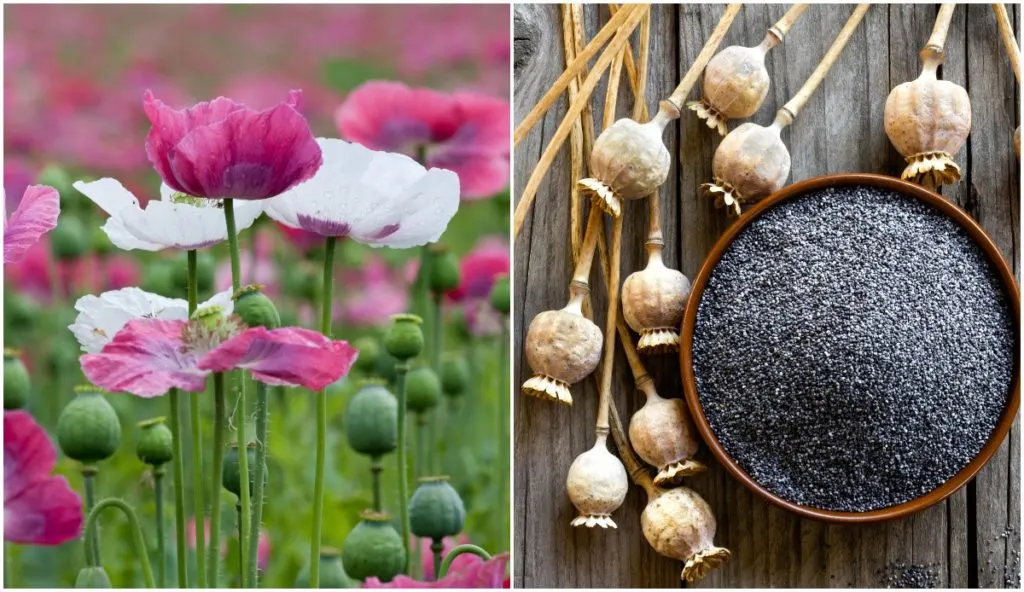
You know those hamburger and hot dog buns that are topped with little black seeds that roll off in every direction when you take a gigantic bite?
More specifically, the topping of a Chicago-style hot dog with its delicious poppy seeds…

Little did I know, that those treasured childhood bites from the Midwest would prepare me for eating enormous amounts of poppy seeds via wintertime treats in Hungary.
Whereas I used to crunch those tiny poppy seeds between my teeth one-by-one, now they come by the hundreds, even thousands.
Believe me, the flavor is intense and incredible!
If you’ve never had the pleasure of eating a generous slice of mákos beigli (poppy seed roll), here is a recipe for you to bake it at home. Yes, you read it right, it takes more than one cup of poppy seeds, not just a sprinkling. Be ready to shift your perspective on how many poppy seeds you can safely eat in one sitting.
However, before eating one slice too many, be sure you aren’t facing any drug tests within the next few days. Although you won’t experience any morphine effects, eating even a small amount of poppies can still produce a false-positive result.
Where are poppies from?
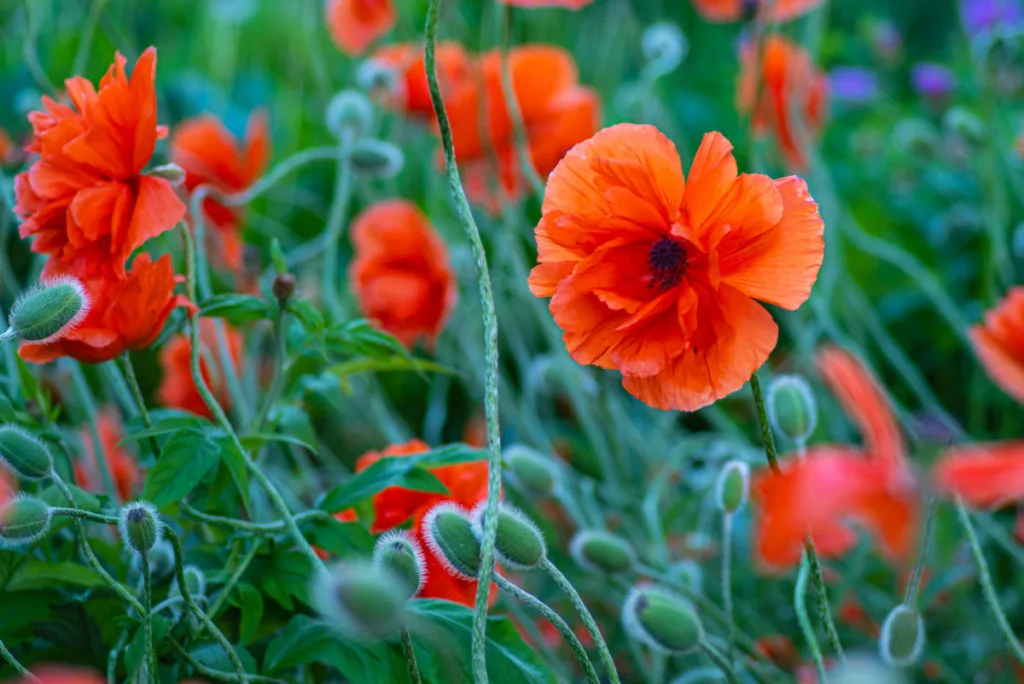
Native to the eastern Mediterranean, they have long been naturalized in Europe and Asia. Their movement has spread slowly westward throughout the years.
Opium poppies, otherwise called breadseed poppies (Papaver somniferum) are in the Papaveraceae family of plants. As the common name implies, the poppy seeds are used both as a foodstuff and for pharmaceutical applications. Powerful alkaloids can also be extracted from the poppy plant, mainly thebaine and oripavine, which are then turned into pain relief medications.
But not all breadseed poppies produce any, if even the tiniest bit, of opium. That’s where the misnomer lies. Like with the production of hemp, you need to dig deeper to find the truth.
If you look further back in historical time, you will also find poppy seeds mentioned on Egyptian papyrus scrolls. All the way back to the Bronze Age (2700 to 1450 BC), used in the Minoan civilization as a milk, opium and honey mixture to calm crying babies.
Nowadays you will still find poppies being consumed in large amounts in Central Europe and South Asia.
Where to find poppy seeds for planting
You don’t need to grow breadseed poppies only for their delicious seeds. They can also be enjoyed for the beautiful blooms they produce.
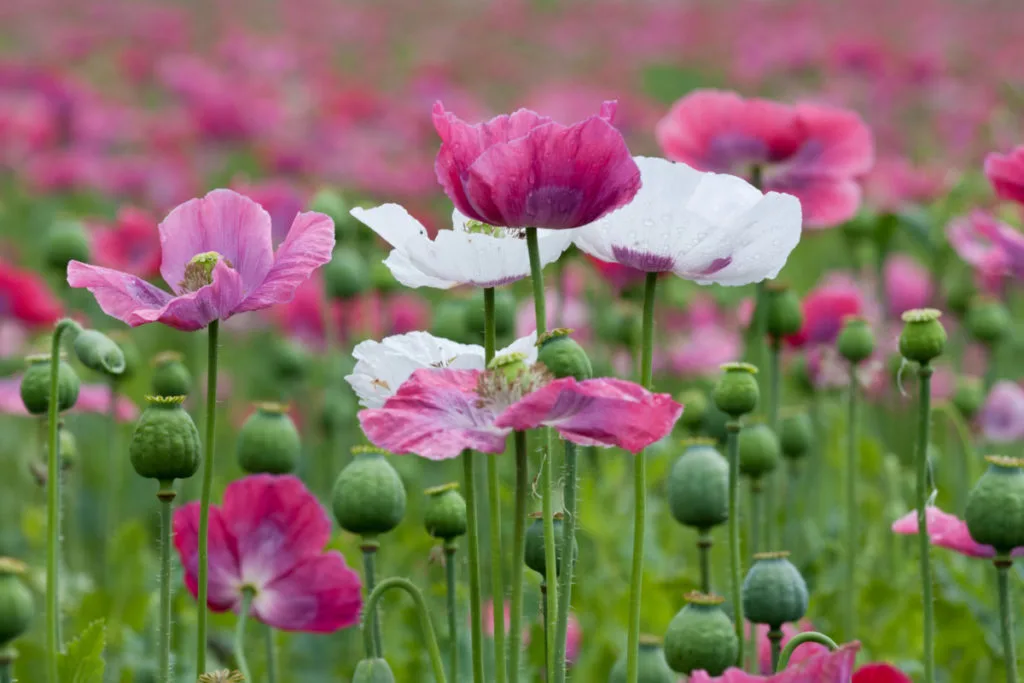
Or you can simply admire the poppy pods for their ornamental value and use them dried in showy floral arrangements.
There are several varieties/cultivars that are safe for growing in your garden – with seeds that are safe for consumption too.
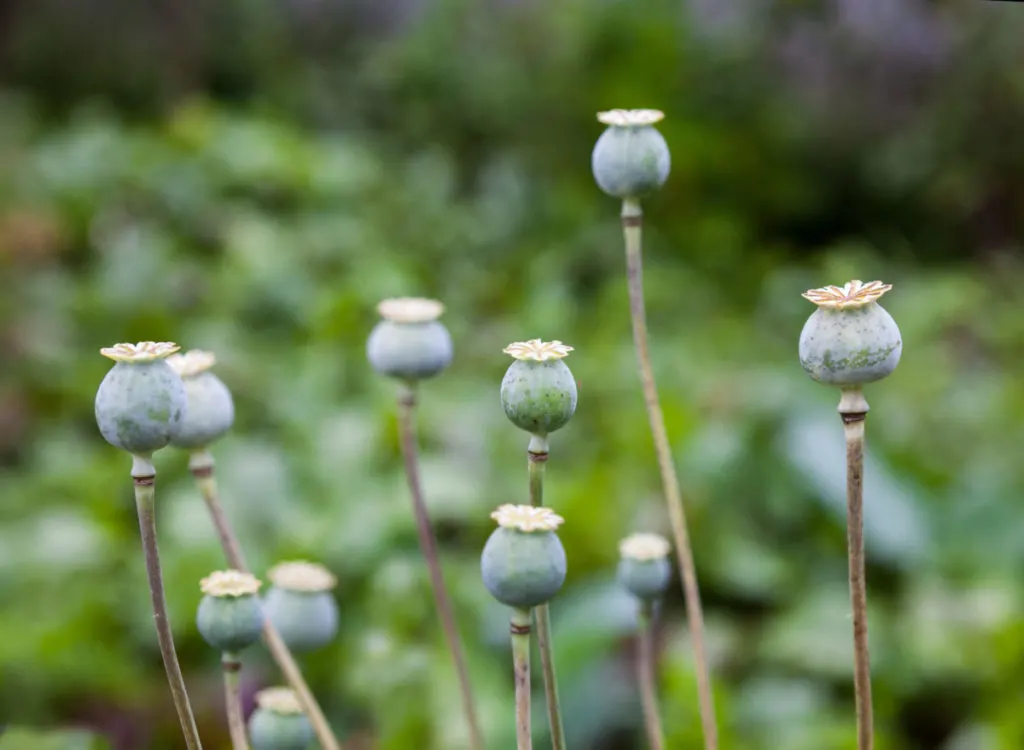
Here are a few resources to get you started with poppy seeds for sowing in the garden:
Beadseed Poppy Seeds from Swallowtail Garden Seeds
Hungarian Breadseed Poppy seeds from Renee’s Garden
Hungarian Blue Breadseed Poppy from Rare Seeds
How to grow breadseed poppies from seed
Breadseed poppy is a frost-hardy annual which blooms in late spring and early summer.
For variety’s sake, there is more than one cultivar to enjoy in the garden, with flowers ranging in color from deep purple to crimson and white.
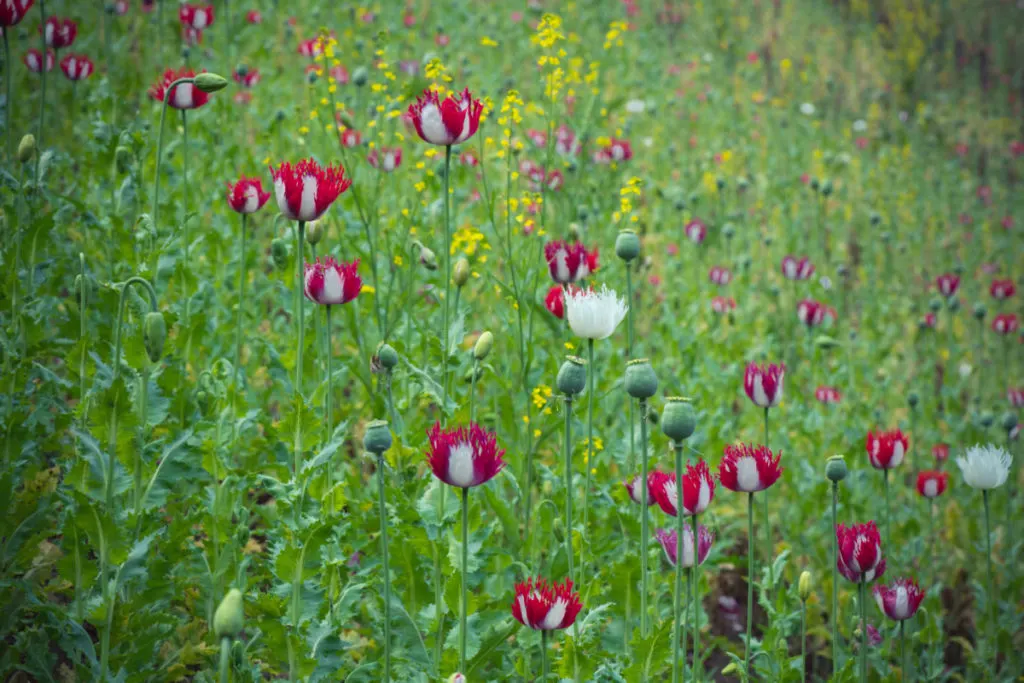
Poppy seeds do not tolerate transplanting. Be sure to sow them outside, directly onto the soil surface. Sowing of poppy seeds can be done in late fall or early spring. It’s never too cold to plant them, for the seeds will germinate when the soil thaws.
To sow your poppy seeds, it’s useful to mix them with a small amount of dry sand. This will help you not to sow them too densely.
Poppies can be planted in rows, or in a patch.
If planting in rows, be sure the rows are 8-10″ apart. When planting in a patch, sprinkle thinly over the soil, knowing that they will need to be thinned a couple of times to ensure large poppyseed-filled pods.
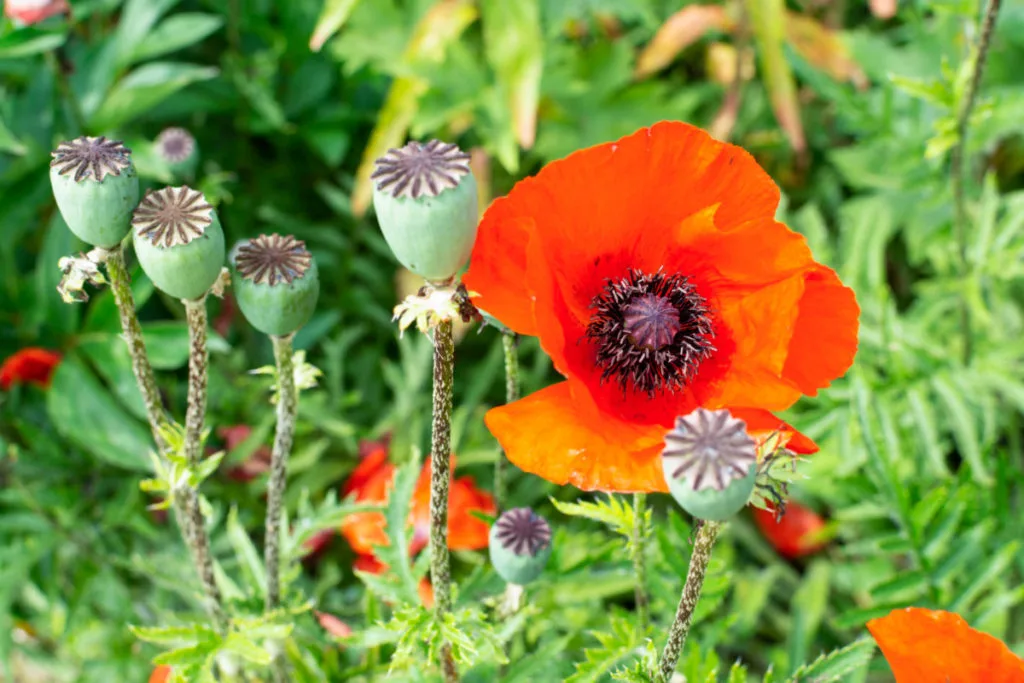
When sowing poppy seeds, be sure to cover them with a thin layer of soil – just 1/8″. Once they emerge and begin to grow, it’s time to think about plant spacing. The final thinning should see the individual poppy plants about 6-8″ apart.
Poppies thrive in full sun to partial shade. Needing just 6 hours of sunlight a day, you’ll be sure to find a place for them in your garden.
Height-wise will depend on the variety. Breadseed poppies grow anywhere from 2-4′ if they like the location they are in. One condition they do not agree upon is soggy soil. Moist soil is the best.
Harvesting your breadseed poppies
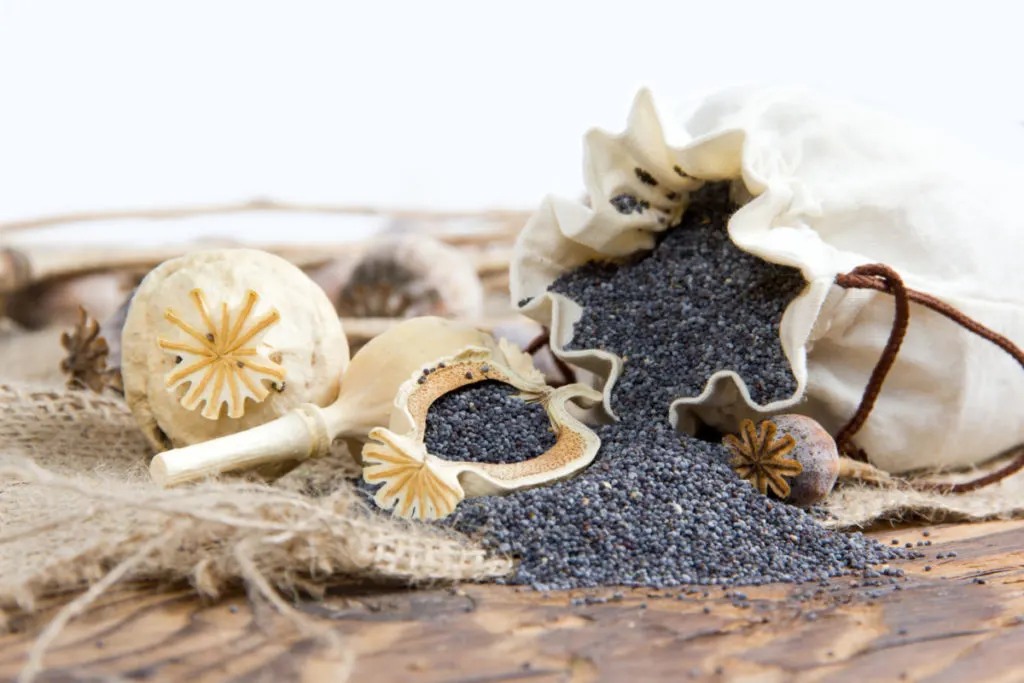
You’ll quickly find that poppies are not very needy, though it may happen that they fall over from a combination of wind and fattening pods. Simply tie them up if that happens. They will still ripen and produce seeds worth harvesting.
Poppy seeds can range in color from blue-gray to brown and white. If this is an eating-factor for you to consider, what you plant is what you get. In other words, what you will harvest, is evident from the seeds you sow.
Harvesting poppies is simple
You’ll know when the seed heads are ready for harvesting, as the seeds will be rattly inside. Give them a little shake to check on their progress from time to time.
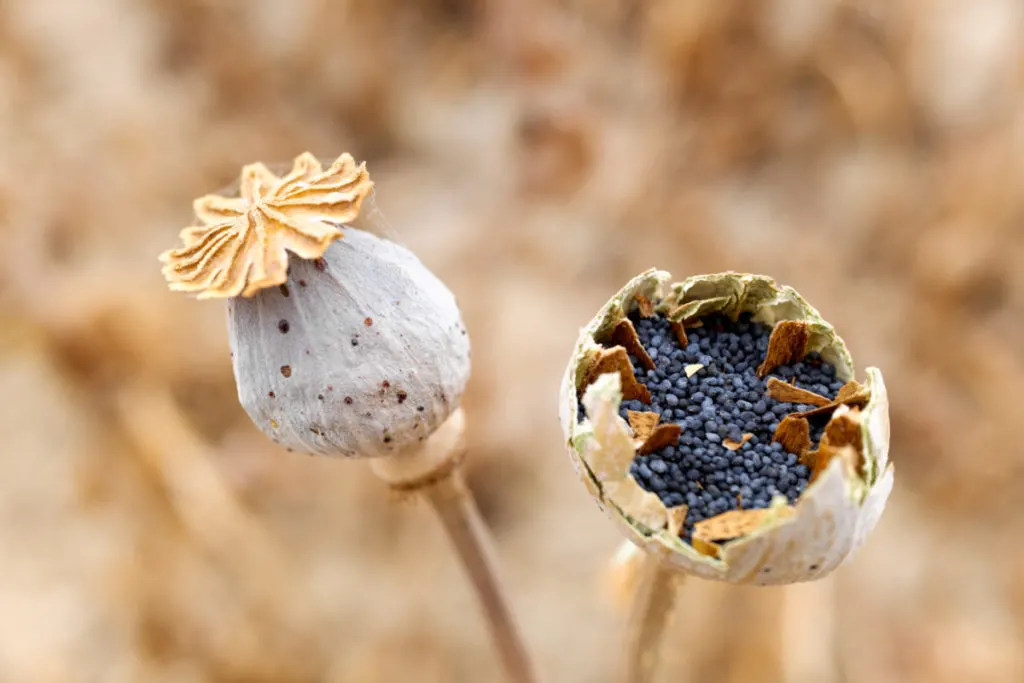
When they are truly ready for picking (when the pods are hard) be sure to cut them back on a dry day. If you are harvesting only a few stems from your garden, tie them upside down with a clean cloth underneath, to let them dry further before setting the seeds free. With a larger harvest, you can place the pods in brown paper bags to continue drying inside.
In nature, when left alone, poppies spread their seeds with the help of the wind swaying the stems, through a set of tiny holes (perforations) forming at the base of the flat pod caps.
To remove the poppy seeds, crack the pods open by hand (or cut off their rims) and pour out the seeds into a bowl. You may need to blow lightly over the collected seeds to remove the chaff.
Saving poppy seeds on the safe side
To be completely sure your poppy seeds are as dry as can be for safe storage, lay them out on a baking sheet and let them sit for a week before putting in airtight jars.
If you only have space for a bowl, be sure to stir your poppy seeds up a couple times a day, ensuring they are thoroughly dry.
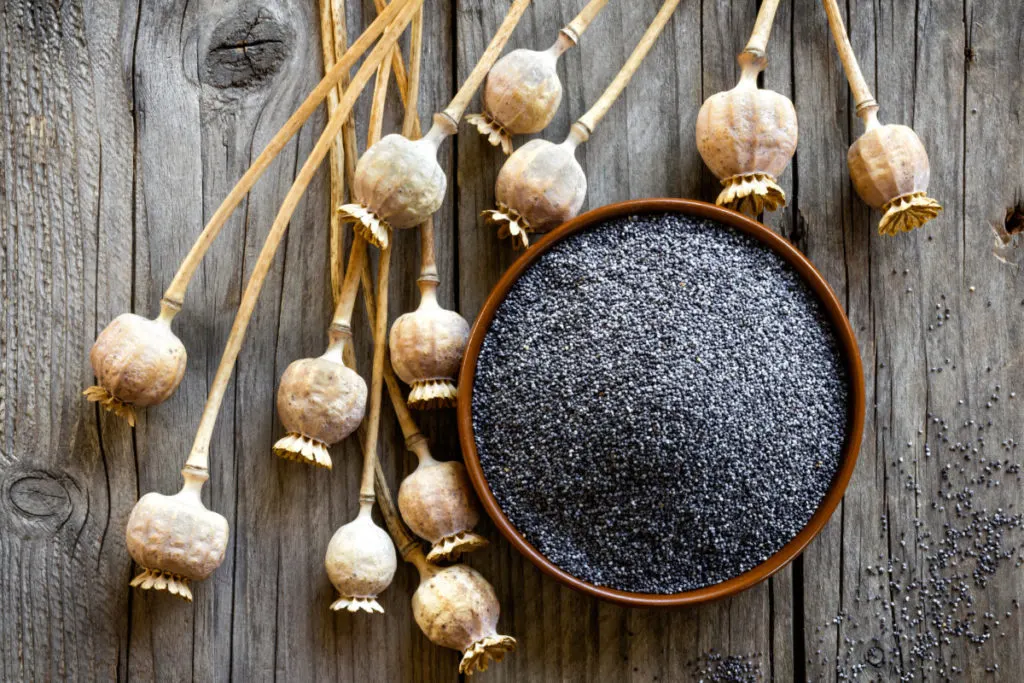
If you forget to harvest your poppies, or simply run out of time, the poppies will self-seed in the garden. This leaves you with not having to sow seeds next year, only to thin the plants. However, it also leaves you without seeds for eating.
Be a good gardener and harvest all the seeds you can get your hands on.
This way you will have plenty to share, eat and plant again. You might take some lemon poppy seed muffins over to your neighbor as well.
Grinding poppy seeds for the best flavor
Before we get to describing some mouthwatering recipes that you absolutely must try, it is worth noting that soaking and/or grinding poppy seeds are two ways to bring out their truly unique flavor.
A spoonful of poppy seeds can easily be tossed into a mortar and pestle, or spice grinder, to release the oils.
But what if you need more than that at once?
That’s where a poppy seed grinder comes into action.
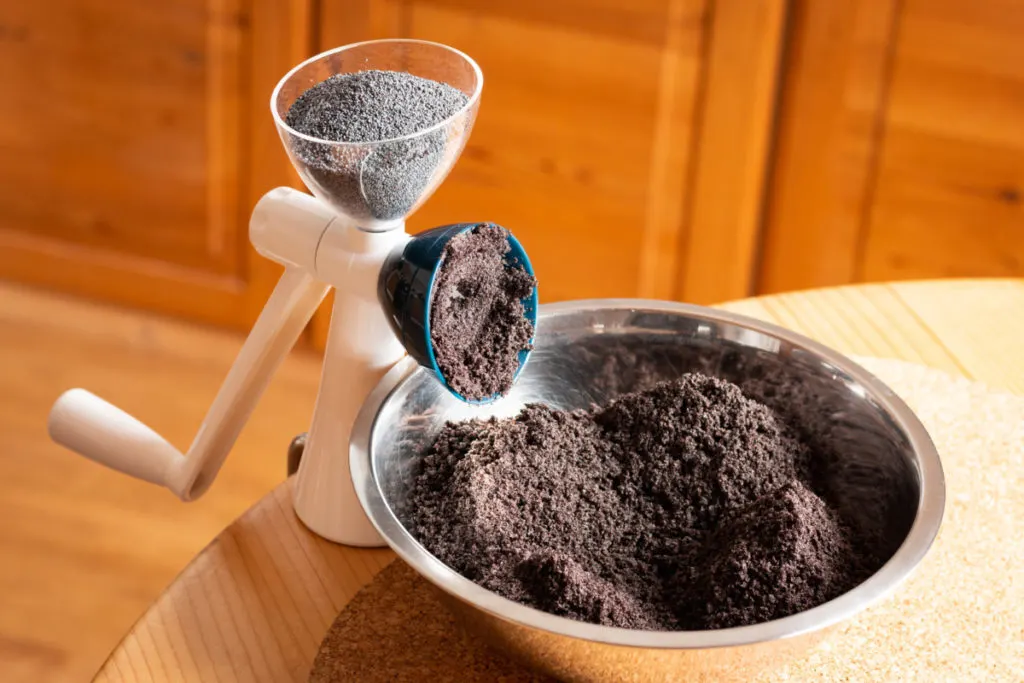
A burr grinder will mash the poppy seeds into a well-textured paste that is suitable for many of the dishes you’ll find below.
Once the seeds are ground, they can then be soaked in a mixture of milk and sugar. In this form they are excellent as a poppy seed filling to be used in a delectable variety of bakery items.
More than 8 ways to eat your poppy seeds
With just a sprinkle, or a tablespoon in every bite, there are plenty of poppy seeds for everyone around the table.
Traditionally, they were added to all sorts of glutenous breads. Nowadays, there is a substitution for everything if you care to seek it out.
For many of your pre-gluten-free favorites, you can still find a mouthwatering recipe that satisfies your poppy seed tooth, if that is even a thing. Just ask my husband and he will tell you that it is. Poppy seeds are a must in our multi-cultural kitchen.
Served salty or sweet, poppy seeds are more than a treat. Poppy seeds are rich in fiber and plant fats, as well as several essential minerals:
- manganese
- copper
- calcium
- magnesium
- phosphorus
- zinc
- thiamine
- iron
When in doubt about any potential health risks associated with consuming unwashed poppy seeds, go ahead and purchase from reputable suppliers sold at the supermarket. These are considered safe for consumption with few, if any, opium compounds.
Let’s get to the good stuff.
1. Poppy Seed Buns, Rolls and Bread
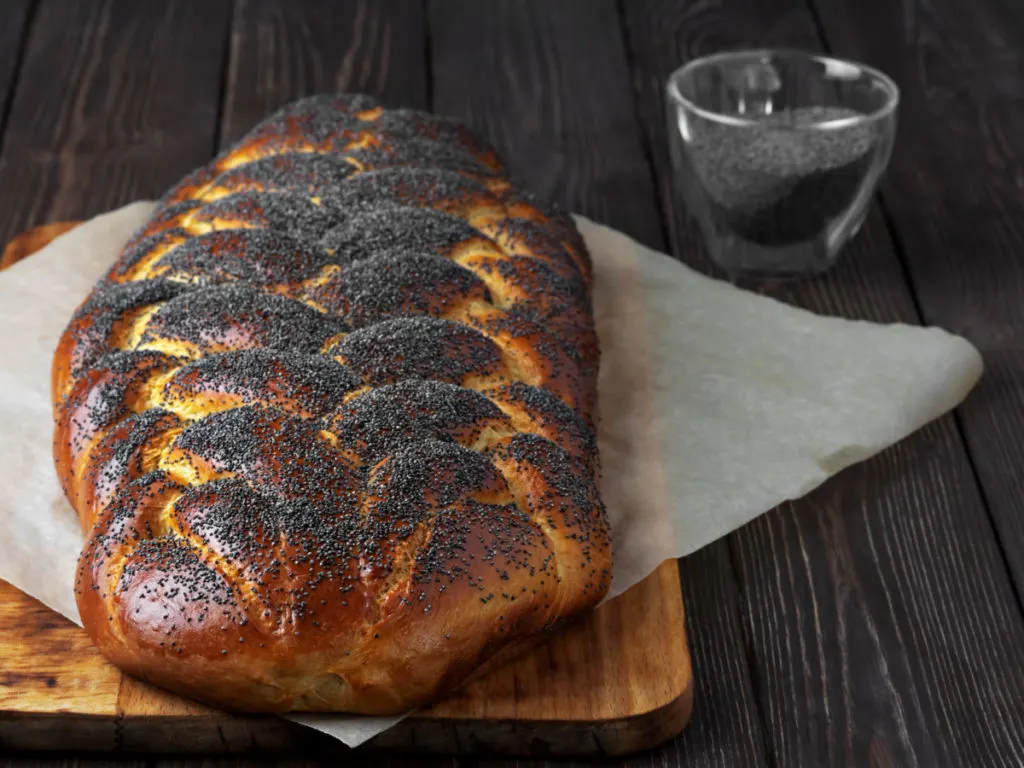
If you aren’t anywhere close to Chicago, you can still make the poppy seed buns to go with the hot dogs for the full effect.
Don’t forget all the essential toppings!
Chicago Red Hot Poppy Seed Buns @ King Arthur Baking
For extra-special sweet or salty rolls, poppy seeds come in handy as well.
Sweet Poppy Seed Buns (Pirohi) @ Natasha’s Kitchen
Poppy Seed Rolls at Taste of Home
Gluten-free Lemon Poppyseed Bread @ Gluten-free on a Shoestring
2. Poppy Seed Bagels
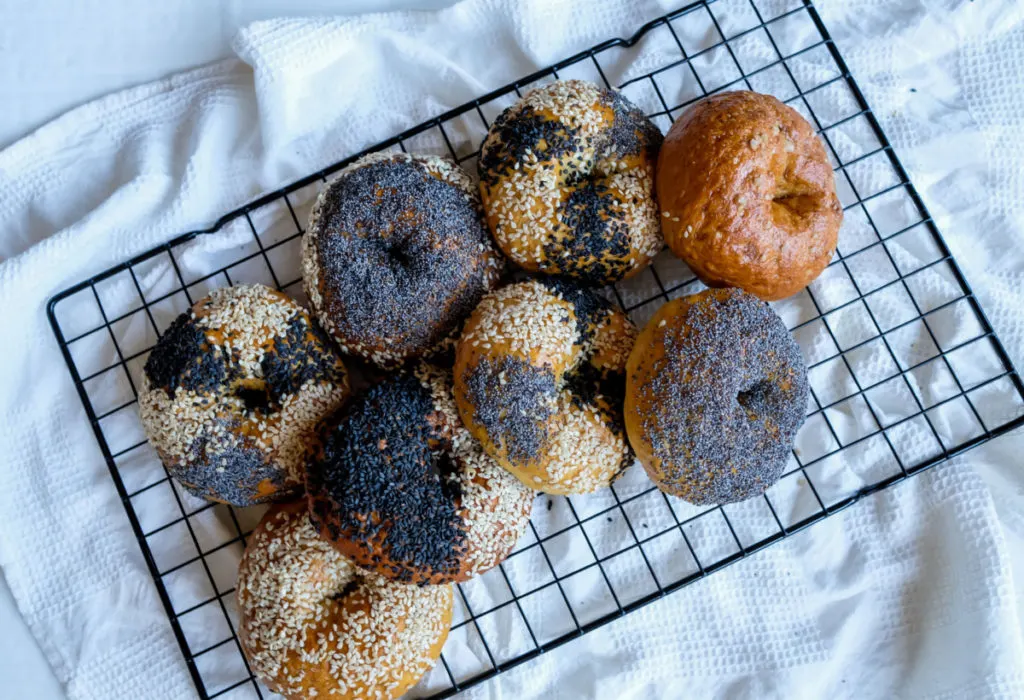
If you can sprinkle poppy seeds on your hamburger and hot dog buns, surely you can top your homemade bagels with it too.
Mix it up with sesame seeds, adding texture and flavor to the crunch of the poppies.
Homemade bagels @ Delish
3. Amish Onion Cake
Now, I’ve never made this, yet I am thoroughly interested by the image alone.
Onions, poppies, paprika and sour cream – sounds like some Hungarian cooking ingredients to me. Now to work on a gluten-free version for ourselves.
Amish Onion Cake @ Taste of Home
4. Hungarian Poppy Seed Beigli
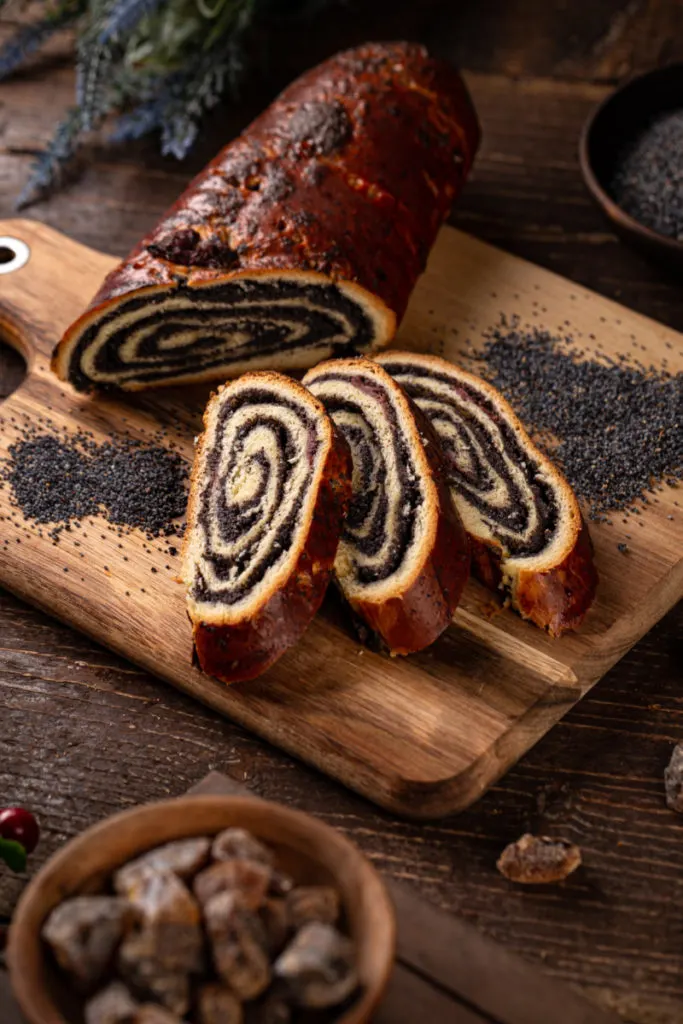
Beigli can be made with poppy seeds and with a walnut filling. Both are excellent choices.
Get both beigli recipes (in English) in one place.
Another similar recipe is the poppy seed Polish makowiec. If you don’t have a poppy seed grinder, you’ll want to buy some poppy seed paste for this recipe, as it takes one pound of the delicious stuff. Keep an eye out for poppy seed cake and pastry filling in the international aisle of the grocery store.
5. Lemon Poppy Seed Cake
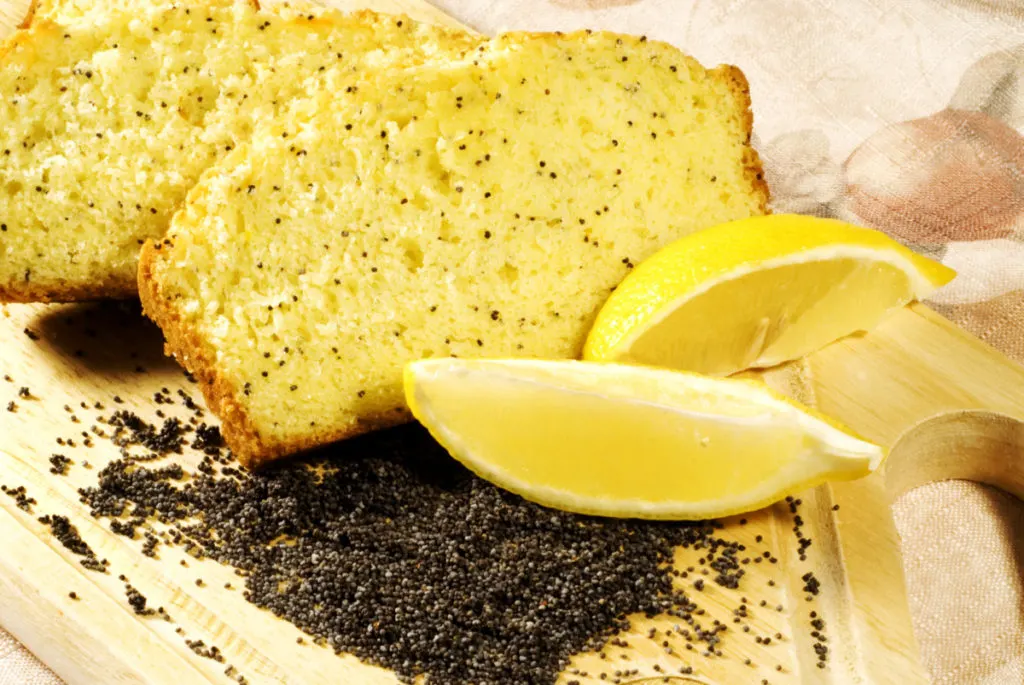
Take your pick, there are so many versions of lemon poppy seed cake out there. Plus, you don’t need to go overboard on the poppies to heartily enjoy their flavor.
Lemon Poppy Seed Cake @ BBC Good Food
Lemon and Poppy Seed Drizzle Cake @ Taste.com.au
Poppy Seed Almond Lemon Loaf @ A Saucy Kitchen
6. Almond Flour Poppy Seed Muffins
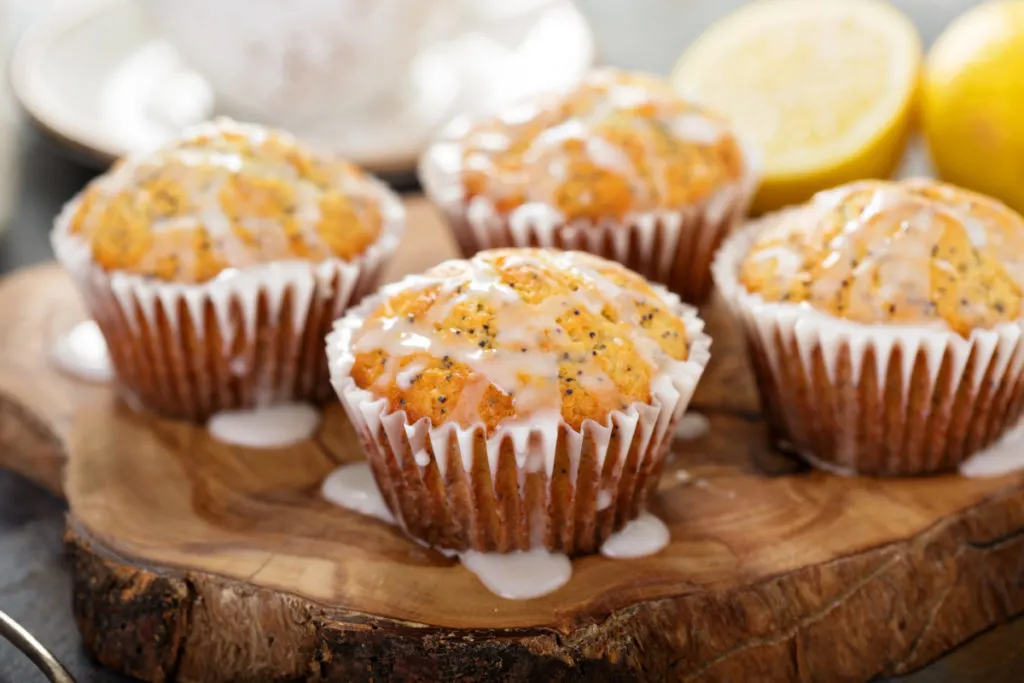
Lemon and poppy seeds are a classic combination, while making them paleo-friendly is a relatively modern concept.
Nevertheless, lemon poppy seed muffins are a must-eat.
Glaze, or no glaze, here’s how to make your own:
Almond Lemon Poppy Seed Muffins: gluten-free and dairy-free @ Fit Mitten Kitchen
7. Poppy Seed Salad Dressing
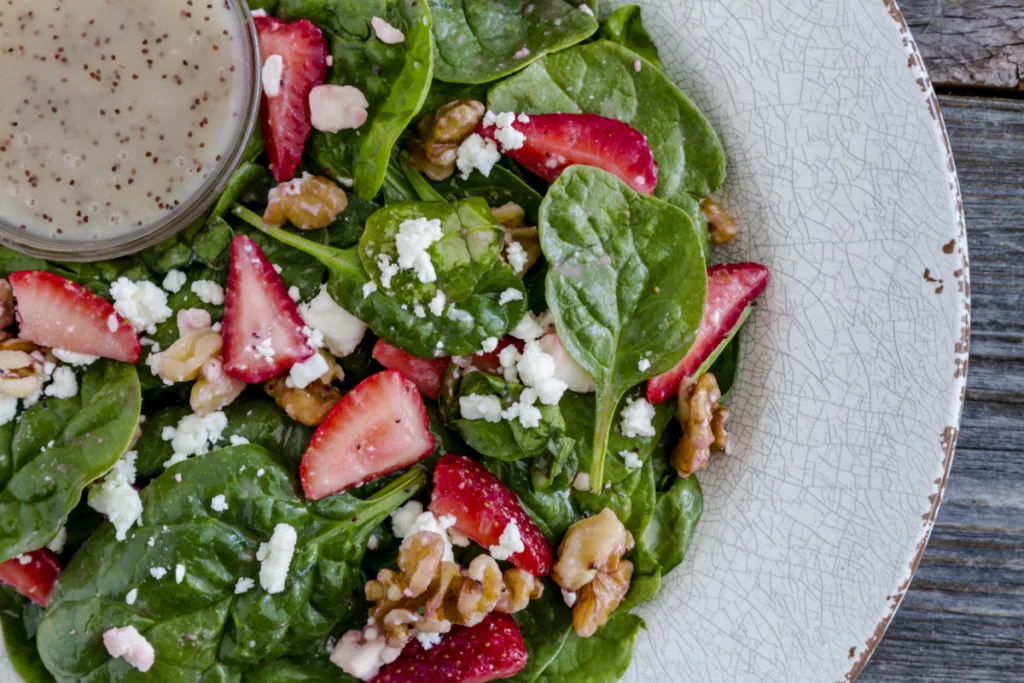
While there are a plethora of ways to add breadseed poppies to baking, let’s not leave out the excitement of salads and veggies that can be harvested from your garden.
Have you ever eaten a strawberry and spinach salad with poppy seed dressing? When strawberries are in season, I highly suggest you give this a try:
Homemade Poppy Seed Dressing (dairy-free) @ Culinary Hill
If you are searching for something a little bit different, why not add some bacon to your salad with the following recipe from Paleo Leap: Strawberry Poppy Seed Salad
8. Carrot and Poppy Seed Salad
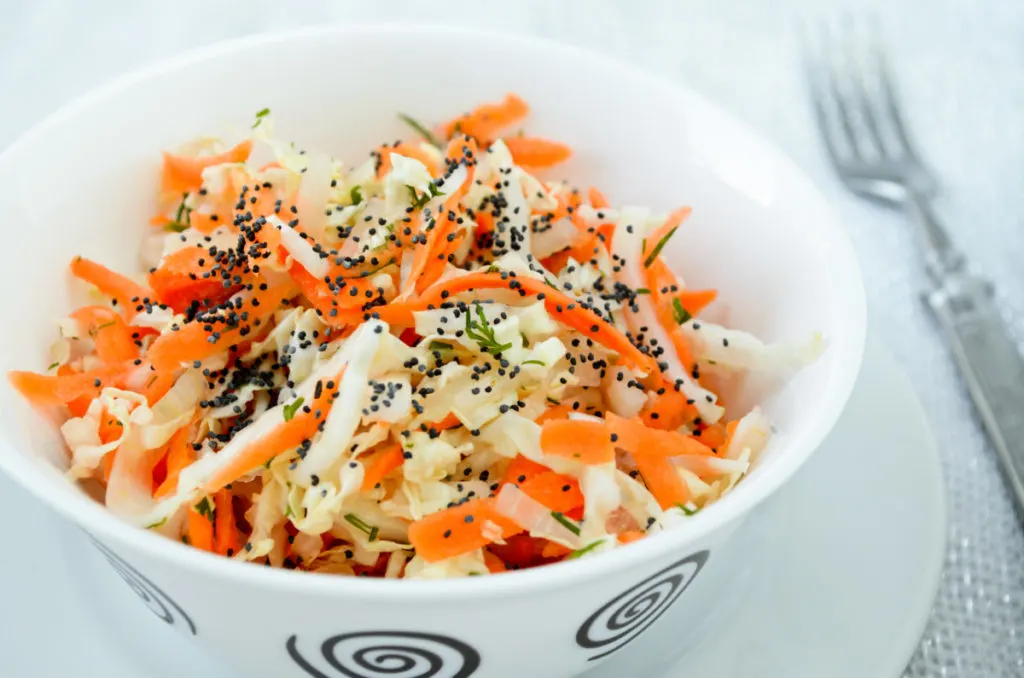
If you have a bumper crop of carrots in your garden, you’ll be seeking out ways to use them up. Fermented carrots are probiotic-rich. Yet, raw carrots have their charming ways too.
Grate those carrots in a salad and toss with lemon juice, olive oil, a dash of honey or sugar and poppy seeds. Sit back and take a bite as you discover a flavor combination you may have never had before.
Which leads me to wonder, why not put some breadseed poppies in your carrot cake?
You can also put poppy seeds in homemade crackers, or in a sweet pasta dish with honey and poppy paste.
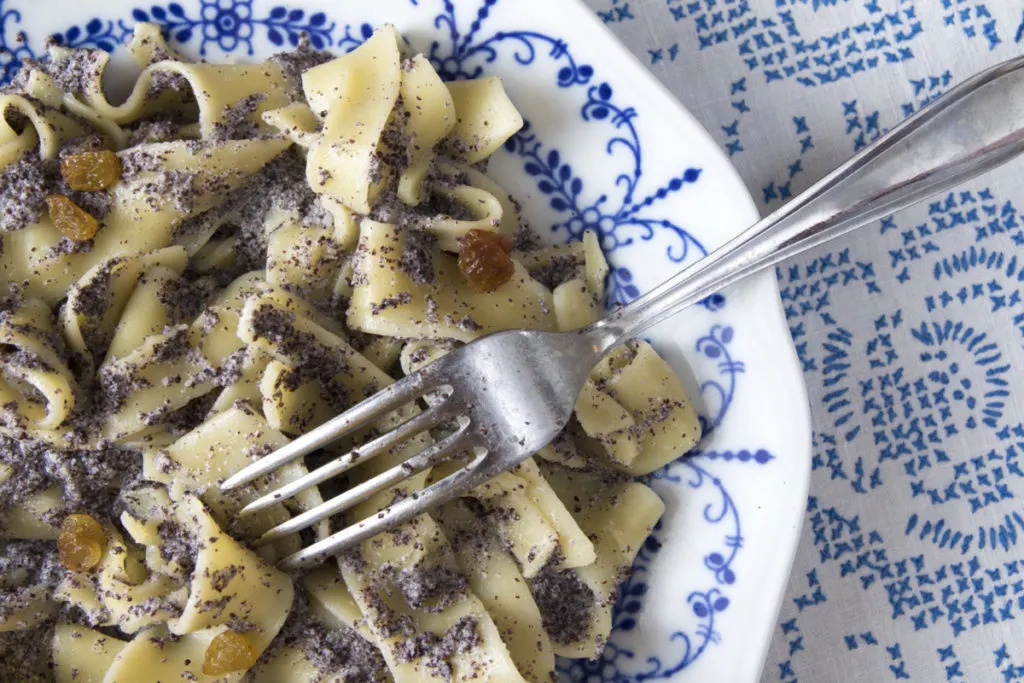
Better yet, how about spaghetti with poppy seeds, lemon, mint and butter?
There are so many ways to incorporate these mild and nutty poppy seeds into your diet. Which recipe will you choose first?

Get the famous Rural Sprout newsletter delivered to your inbox.
Including Sunday musings from our editor, Tracey, as well as “What’s Up Wednesday” our roundup of what’s in season and new article updates and alerts.

